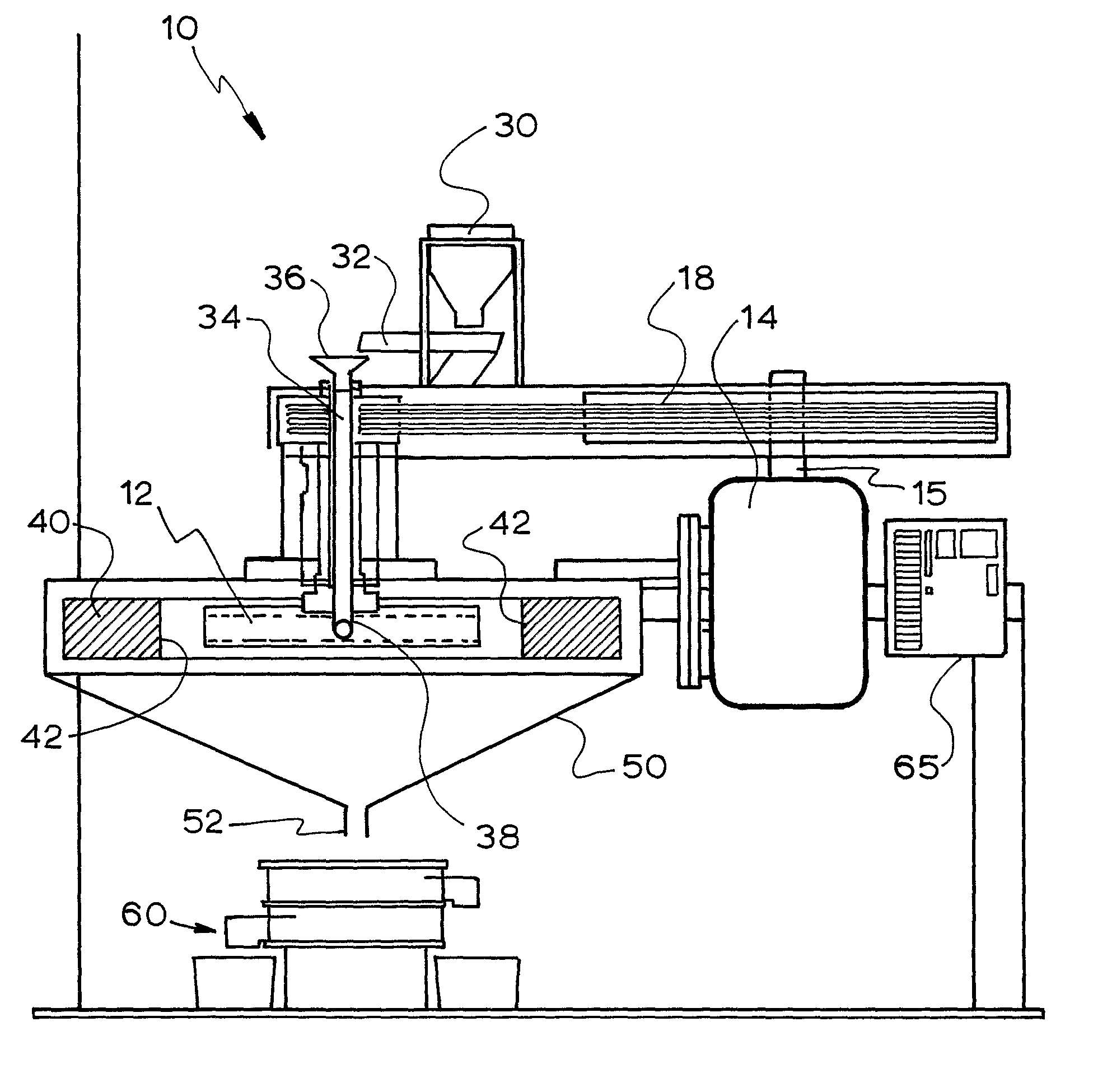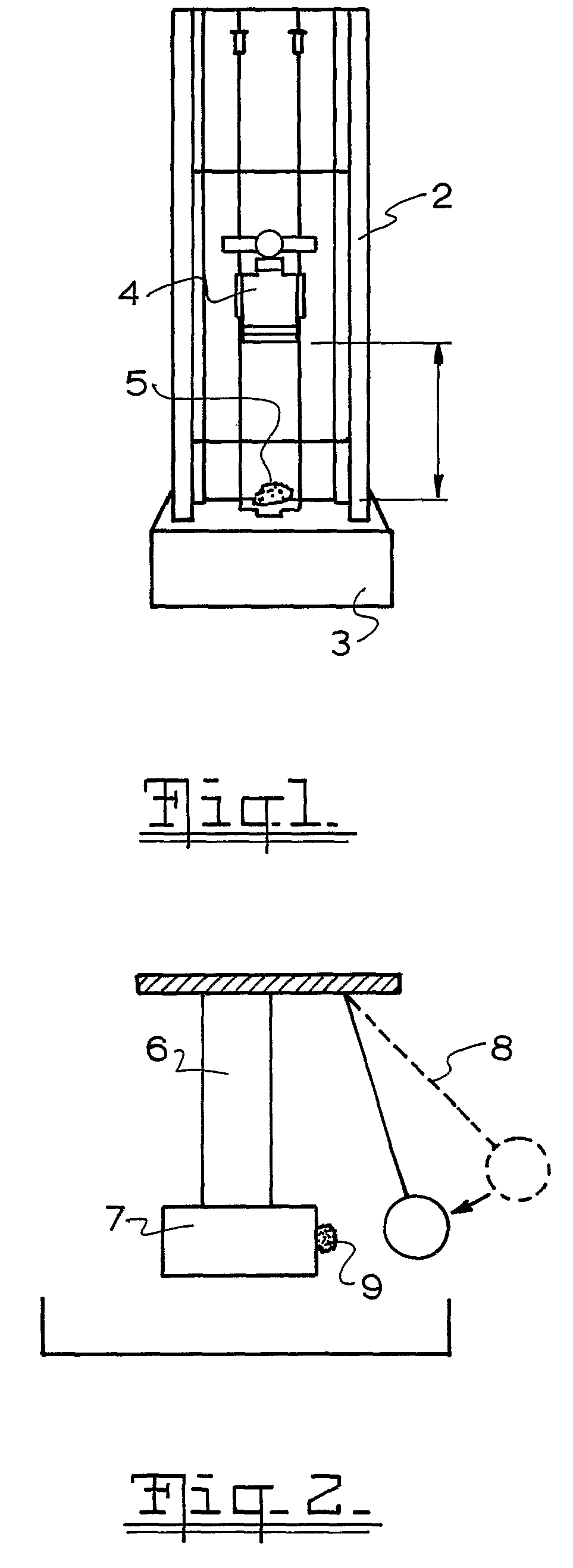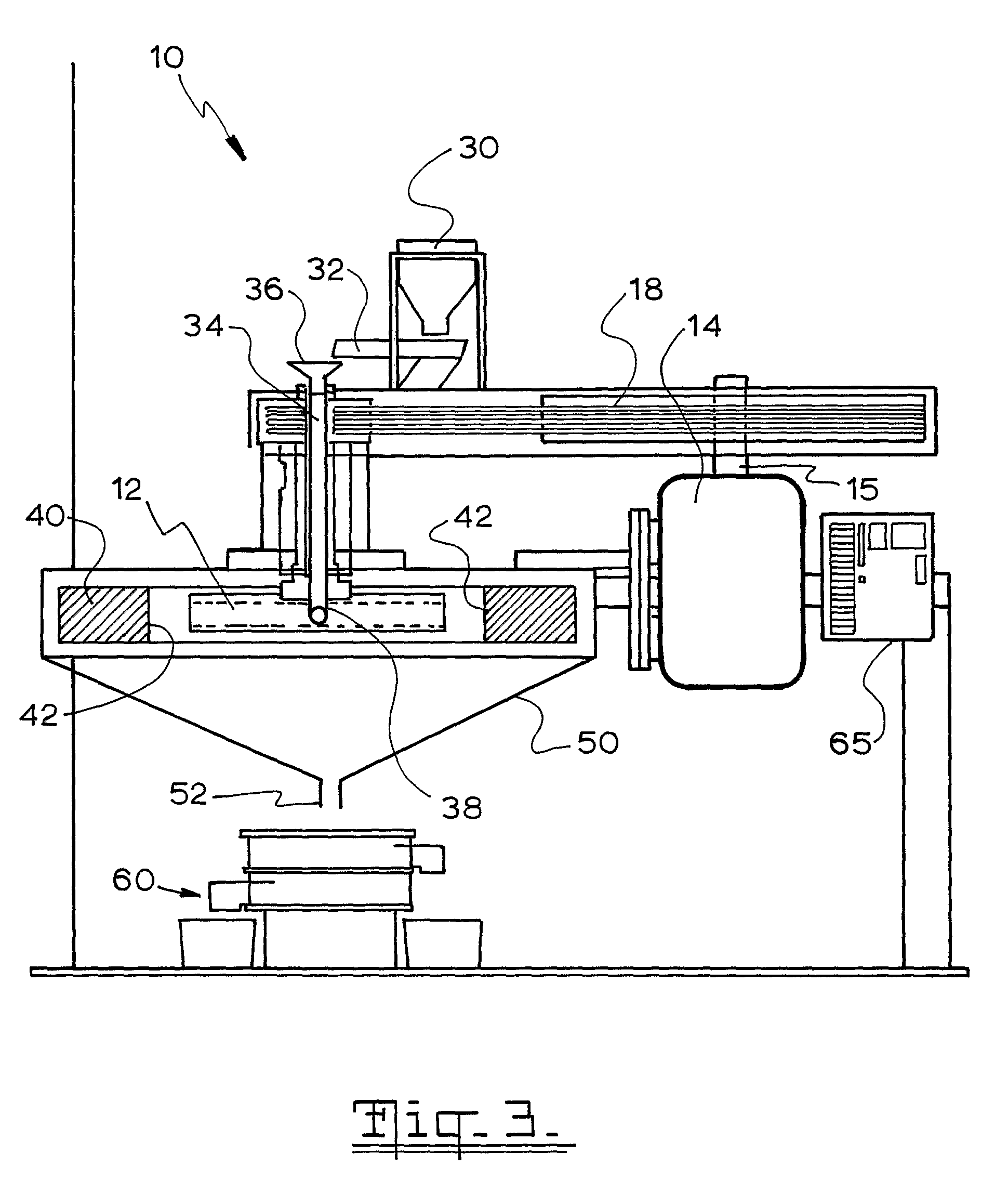Apparatus for determining breakage properties of particulate material
a technology of particulate material and breakage properties, which is applied in the direction of material strength using tensile/compressive force, instruments, grain treatment, etc., can solve the problems of low efficiency of mills in mineral processing industry, affecting the operation of plants, and breaking up rock bodies in crude fashion
- Summary
- Abstract
- Description
- Claims
- Application Information
AI Technical Summary
Benefits of technology
Problems solved by technology
Method used
Image
Examples
Embodiment Construction
[0118]An apparatus and method for determining the breakage properties of particles in accordance with this invention may manifest itself in a variety of forms. It will be convenient to hereinafter provide a detailed description of one embodiment of the invention with reference to the accompanying drawings. The purpose of providing this detailed description is to instruct persons having an interest in the subject matter of the invention how to put the invention into practice. It is to be clearly understood however that the specific nature of this detailed description does not supersede the generality of the preceding statements. In the drawings:
[0119]FIG. 1 is a schematic front view of an apparatus for characterising rock breakage that is known in the prior art;
[0120]FIG. 2 is a schematic side view of another prior art apparatus similar to that in FIG. 1 showing how the apparatus impacts the test particle to cause breakage thereof;
[0121]FIG. 3 is a schematic sectional front view of a...
PUM
| Property | Measurement | Unit |
|---|---|---|
| angle | aaaaa | aaaaa |
| diameter | aaaaa | aaaaa |
| diameter | aaaaa | aaaaa |
Abstract
Description
Claims
Application Information
 Login to View More
Login to View More - R&D
- Intellectual Property
- Life Sciences
- Materials
- Tech Scout
- Unparalleled Data Quality
- Higher Quality Content
- 60% Fewer Hallucinations
Browse by: Latest US Patents, China's latest patents, Technical Efficacy Thesaurus, Application Domain, Technology Topic, Popular Technical Reports.
© 2025 PatSnap. All rights reserved.Legal|Privacy policy|Modern Slavery Act Transparency Statement|Sitemap|About US| Contact US: help@patsnap.com



